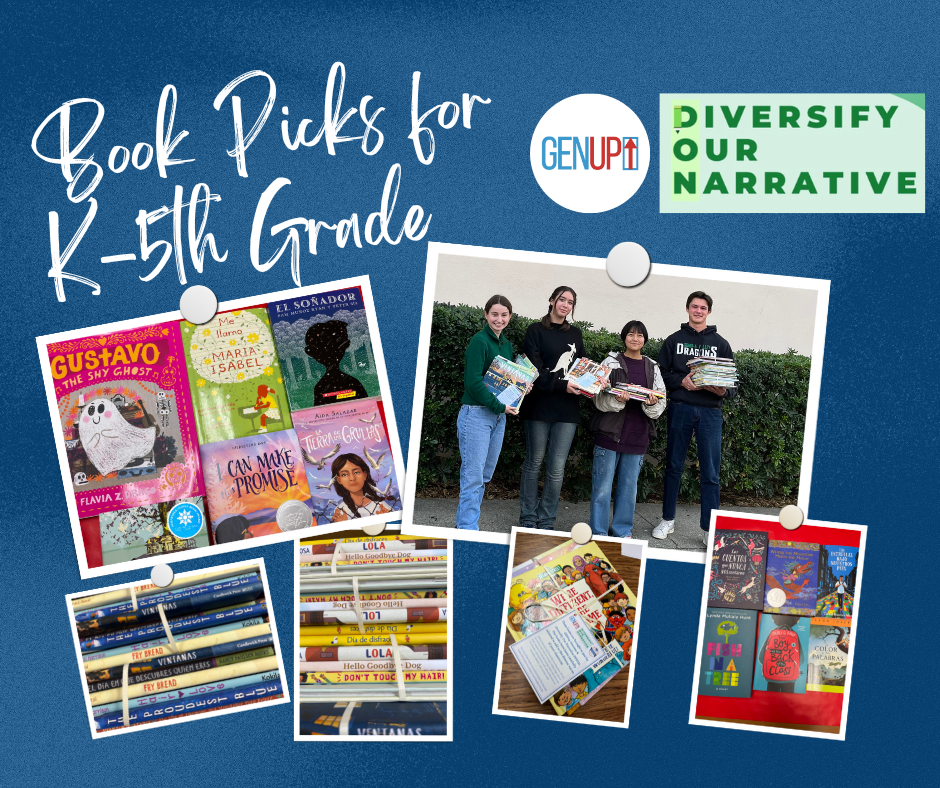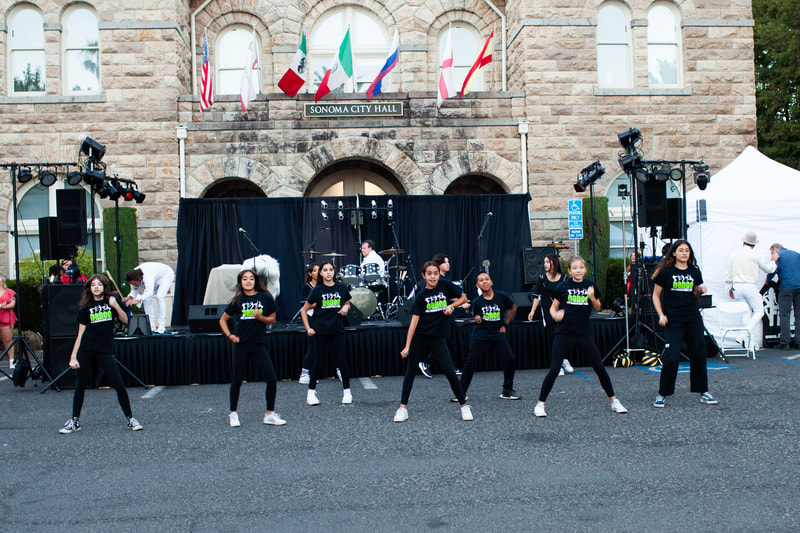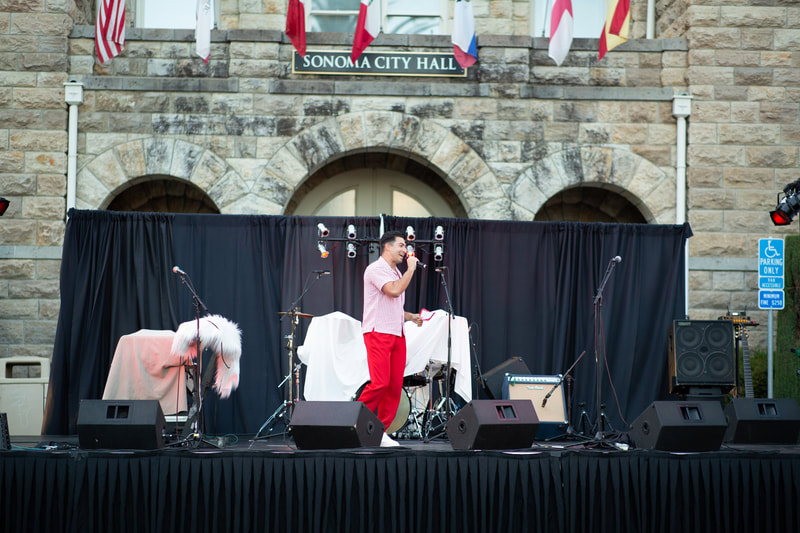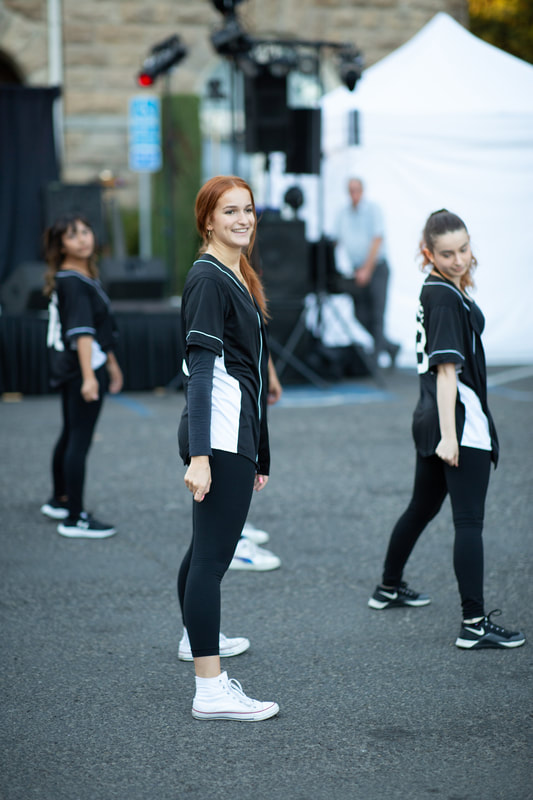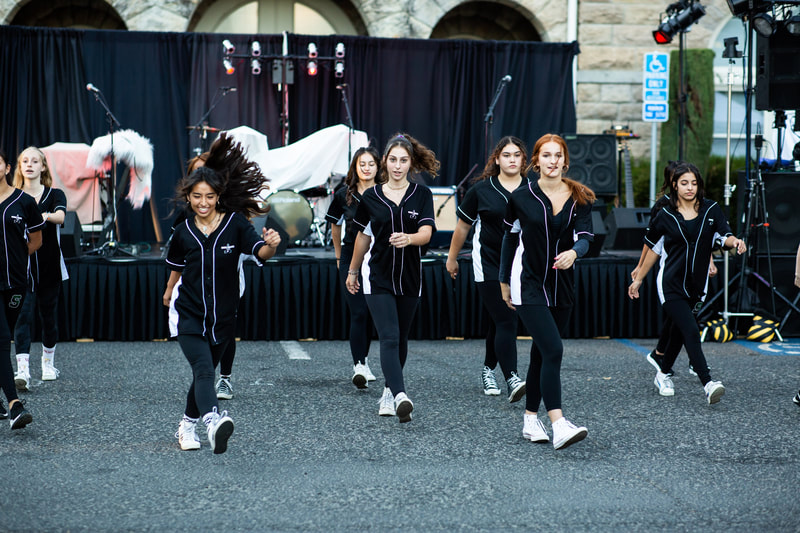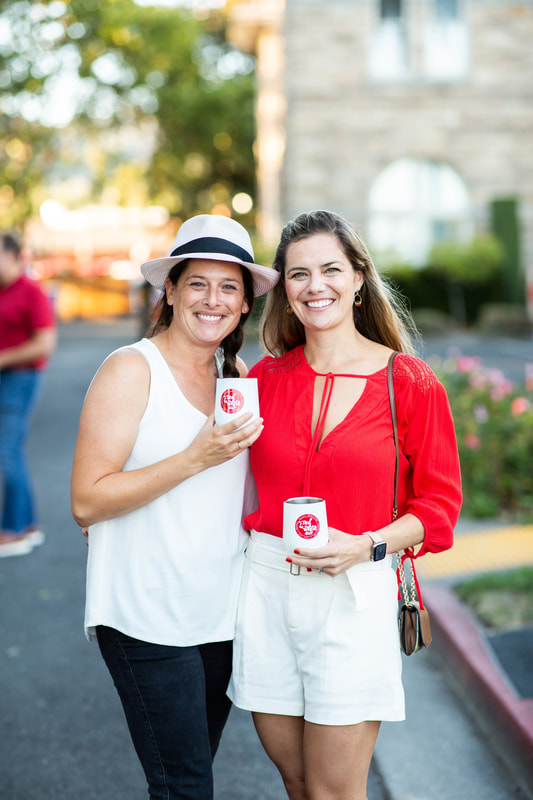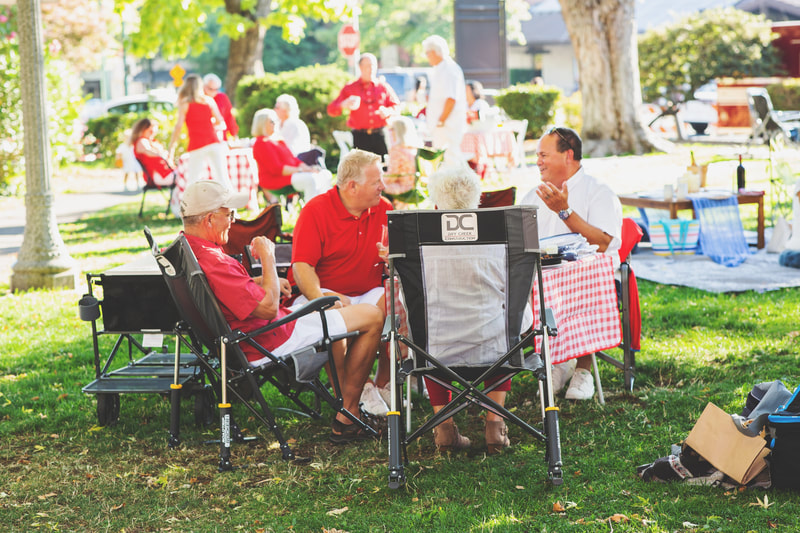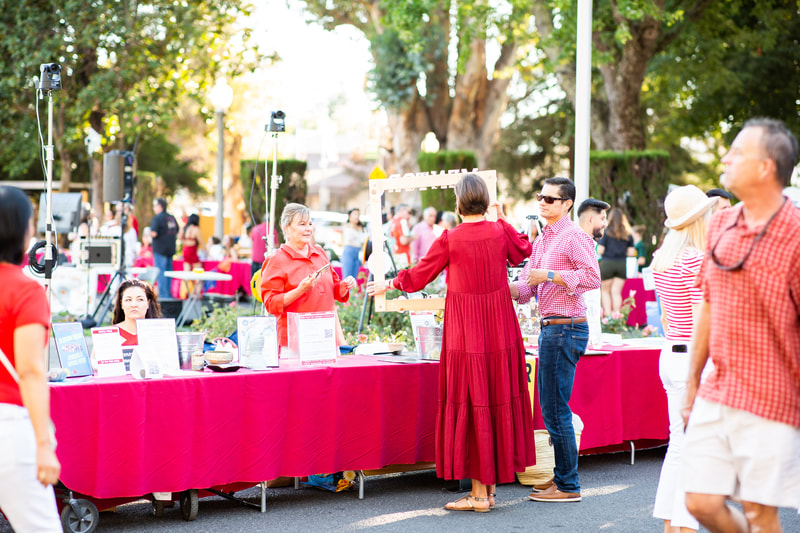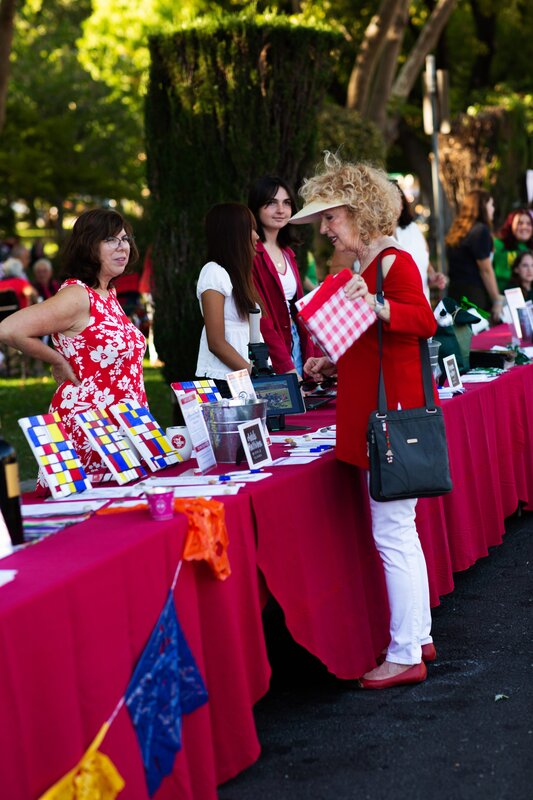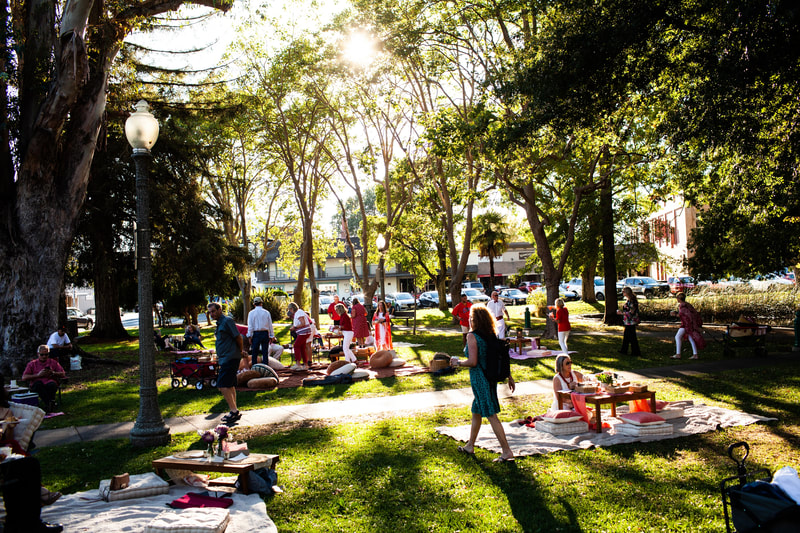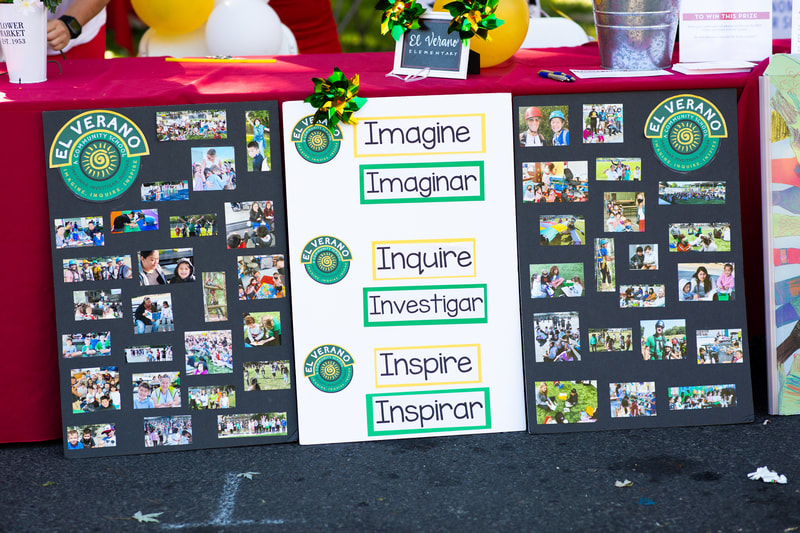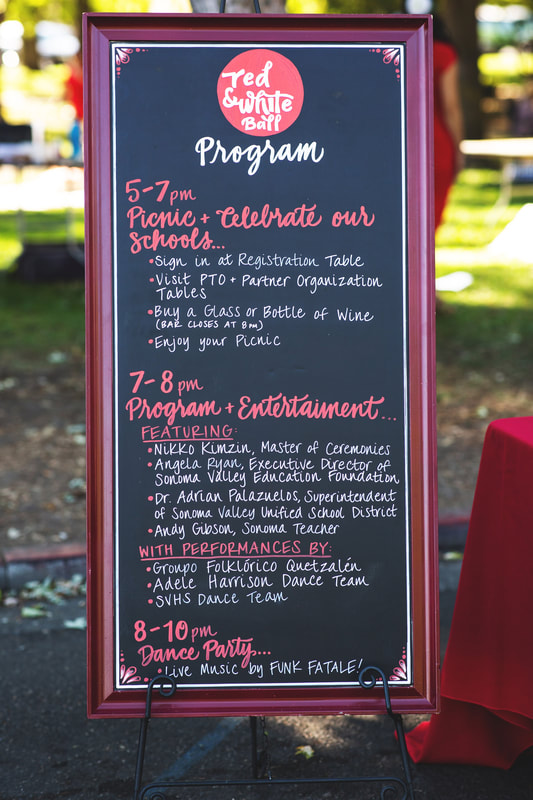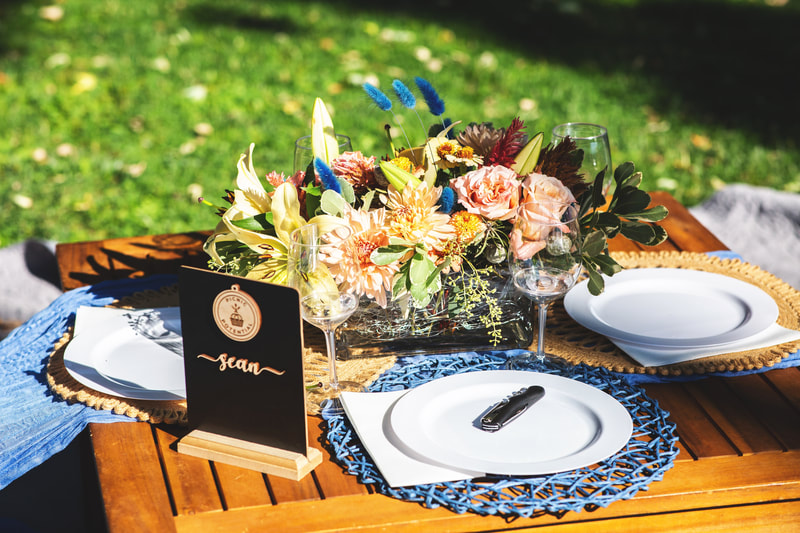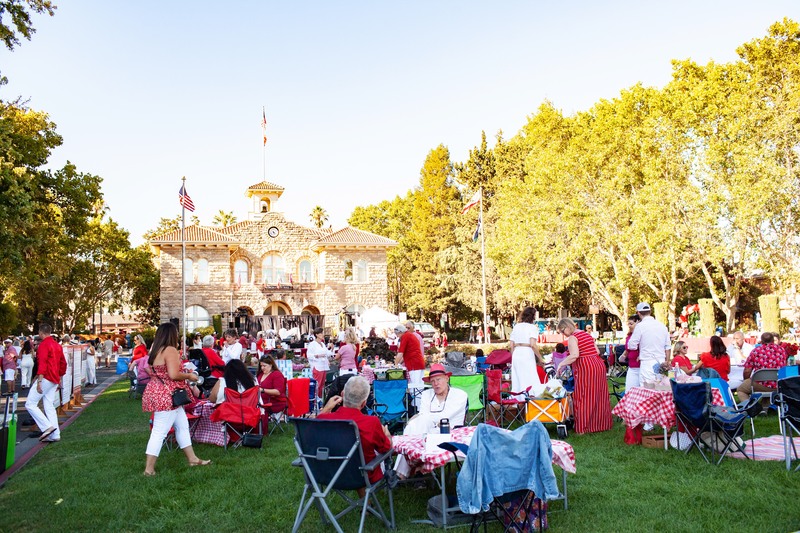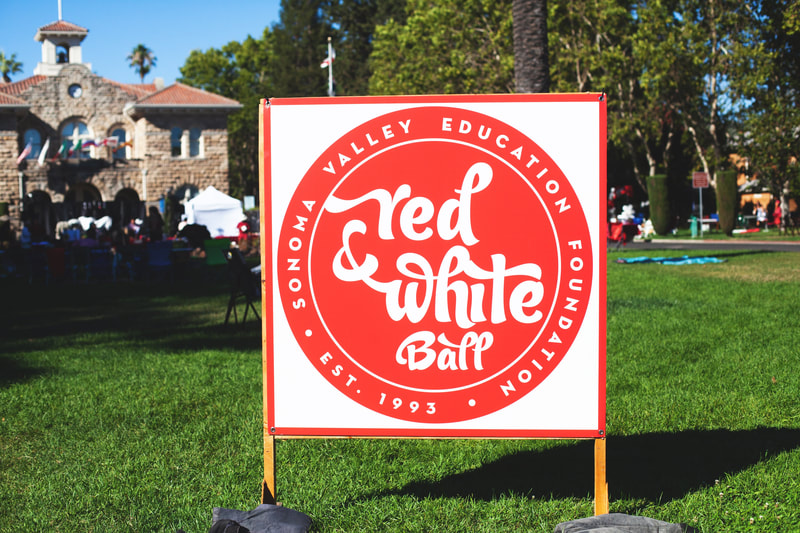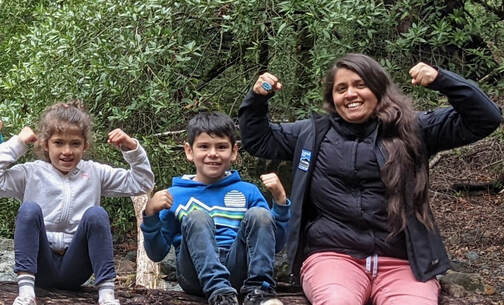|
The Sonoma Valley Education Foundation proudly supports the vision of the SVHS student-led clubs GENup Sonoma & Diversify Our Narrative SVUSD. Their mission is to elevate young voices and advocate for broader representation and cultural diversity in education district- and county-wide. The high school students have carefully selected books for elementary schools in order to add to the diverse voices of the classrooms. Flowery Elementary is the most recent school to receive the delivery of books in teachers' mailboxes.
All the books were purchased locally from Readers' Books. We are sharing the book lists if you are looking to bring more diverse voices to your home library as well! Kindergarten All Are Welcome by Alexandra Penfold Alma and How She Got Her Name by Juana Martinez-Neal Planting Stories: The Life of Librarian and Storyteller Pura Belpré by Anika A. Denise Mae Among the Stars by Roda Ahmed Eyes That Kiss in the Corners by Joanna Ho First Grade The Proudest Blue by Ibtihaj Muhammad and S.K. Ali Hair Love by Matthew A. Cherry Fry Bread: A Native American Family Story by Kevin Noble Maillard The Day You Begin (El día en que descubres quién eres) by Jacqueline Woodson Ventanas (Windows) by Julia Denos Second Grade Don't Touch My Hair! by Sharee Miller Hello Goodbye Dog by Maria Gianferrari Mi Papi Tiene Una Moto (My Papi Has a Motorcycle) by Isabel Quintero Lola by Junot Diaz Día de disfraces (Dress-Up Day) by Blanca Gomez Third Grade We're Different, We're the Same (Sesame Street) by Bobbi Kates The Gift of Ramadan by Rabiah York Lumbard Hair Twins by Raakhee Mirchandani ¡Solo Pregunta! - by Sonia Sotomayor Fourth Grade Gustavo, the Shy Ghost by Flavia Z. Drago Me llamo María Isabel by Alma Flor Ada El Soñador (The Dreamer) by Pam Muñoz Ryan As Brave As You by Jason Reynolds I Can Make This Promise by Christine Day La tierra de Las Grullas (Land of the Cranes) by Aida Salazar Fifth Grade Los Cuentos que Nunca Nos contaron (The Stories They Never Told Us) by Myriam Sayalero Fish in a Tree by Lynda Mullaly Hunt Where the Mountain Meets the Moon by Grace Lin The Boy at the Back of the Class by Onjali Q. Raúf Las Estrellas Bajo Nuestros Pies (The Stars Beneath Our Feet) by David Barclay Moore El Color de Mis Palabras (The Color of My Words) by Lynn Joseph
0 Comments
Dear SVEF Community,
I am saddened by the abrupt and unexpected departure of Superintendent Palazuelos, announced at today’s special board meeting. As always, our focus at the Sonoma Valley Education Foundation will remain the 3,000 students and 200 teachers at the public schools in our community. They are the strength and heartbeat of our district and inspire us to stay committed to our mission of enabling the potential of every child in SVUSD. This year alone, you’ve helped us invest $980,000 in student programs, a show of generosity that we’ve learned remains unaffected by external circumstances, as evidenced by the steadfast support we saw during the pandemic and beyond. We remain resolute in our commitment to the public education community and are grateful for your support and dedication to our students, now and always. Sincerely, Angela Ryan https://www.sonomanews.com/article/opinion/letters-to-the-editor-sept-14-2/
EDITOR: I want to extend a sincere thank you to the community for showing up in a massive way for the public schools at the Red & White Ball on August 27. More than 1,200 guests joined us for our community picnic, displaying how truly UNIFIED we are in supporting the students and schools of Sonoma Valley. By hosting this event in a completely new, more inclusive format, we endeavored to celebrate and unify support of the public schools, as well as give every person in Sonoma Valley who has a stake in their success – which we believe is everyone – a chance to participate and feel pride in our collective accomplishments. We are thrilled with the fantastic turnout and the many ways the community joined with the schools to show their support. Our fundraising goal -- $15,000 -- was surpassed and quadrupled with matching funds from donors and sponsors. While this is a small slice of our overall fundraising commitment of $1 million+ to support student programs this year, successfully meeting our event goal means we are able to bolster the incredibly impactful Classroom Grants fund for teachers and school staff. We're already starting to approve requests from teachers, like Ms. Prehn at El Verano Elementary School, who is receiving multi-sensory, hands-on tools to support her Focused Learning program, which helps foster reading and literacy skills with her students. We're honored to have welcomed the community to this event for the first time in three years and are humbled by the support we receive to fulfill our mission on behalf of the students and schools of Sonoma Valley. We couldn't do this without the guests, donors, supporters, sponsors, and friends, and we are proud to continue our work of putting the unified in our district's middle name. Angela Ryan, executive director, Sonoma Valley Education Foundation We were thrilled to welcome over 1,200 guests to the 2022 Red & White Ball, reimagined as a community picnic. Guests were greeted and guided by talented emcee Nikko Kimzin, and entertained by the Sonoma Valley High School Dance Team, the Adele Harrison Middle School Dance Team, and Grupo Folklorico Quetzalén of Sonoma Valley. They heard from SVHS History and AVID teacher Andy Gibson about the importance of Sonoma Valley Education Foundation’s Classroom Grants program; from Adrian Palazuelos, Superintendent of Sonoma Valley Unified School District, about the importance of community partnerships with the schools; and from Angela Ryan, Executive Director of the Sonoma Valley Education Foundation, about the mission of SVEF to cultivate community support and raise funds to benefit the school district in enabling the potential of every student. While the format and goal of this year’s Red & White Ball has evolved to serve primarily as a community celebration of our public schools, there was no shortage of generosity from our guests. Through a special opportunity during the event, attendees texted donations and helped us surpass our goal of $15K, and thanks to matching funds from our Business Partners and donors, those funds will be quadrupled. These gifts will go directly to our Classroom Grants program, which gives funding to teachers for everything from classroom supplies to creative enrichment opportunities for students. Thanks to our guests’ generosity, we are already starting to approve Classroom Grants for this school year! Sonoma Valley Education Foundation Executive Director Angela Ryan shared, “We want to thank everyone who came to celebrate our public schools and help us usher in a new and more inclusive era of the Red & White Ball. Between the continued and immense generosity of our donors giving us the confidence to try a new format, and the amazing partnership of our educators, PTOs, students, and nonprofit partners helping bring the event to life, we feel an enormous amount of gratitude for our local community coming together in the spirit of celebrating students and our public schools. We hope to continue expanding our programming and events to welcome more families and community members this school year and beyond.” Photo credit: Sharon Neves Photography
Tickets are on sale for the Red & White Ball on August 27! Purchase yours today to win a special treat! All guests who purchase tickets before midnight on July 31 will automatically be entered into a drawing for a four-person dining-style picnic setup, generously provided by Picnic Potential LLC! If you want to learn more about the services available with Picnic Potential including the options to add on to your picnic, visit the link below. The team at Picnic Potential will setup so you will have your spot ready for you! We hope you’ll be able to make it to the event! You’ll dance to live music by Funk Fatale, hear from Sonoma Valley teachers and staff, and learn about the great things happening at our local public schools. Don’t miss out on this opportunity to win a picnic setup--it’s the perfect way to enjoy the Red & White Ball! Be sure to purchase your tickets today for your chance to win! EMILY CHARRIER
INDEX-TRIBUNE EDITOR & PUBLISHER After suffering an unbearable loss when their 16-year-old son’s heart stopped in summer 2016, the parents of Michael Brindley set out to protect other teens from a similar fate. Almost six years to the day after Brindley’s death, their efforts helped save a teenager at Sonoma Valley High School. On June 15, a 17-year-old collapsed while playing basketball at the school. His friends took heroic action, performing CPR and using an automated external defibrillator to keep his heart beating before help could arrive. The boy was airlifted to Santa Rosa Memorial Hospital, where he remained hospitalized as of June 22. “Just to have it be a young man who was playing basketball,” said Kristy Brindley, Michael’s mother. “My son was playing basketball.” Sports, she said, were where her son came to life. Michael tracked multiple teams and with his parent’s supervision launched his own sports blog when he was 13. Called Just1Mike, it amassed more than 100 posts before his death. “His dream was to become a sports broadcaster,” she said. “He was just a beautiful boy with a promising future.” Michael was thrilled to head to summer camp in 2016 outside of Chicago. “He was ready for the most magical summer,” his mother said. One evening he was playing basketball, a good game with his friends by all accounts. There were coaches and counselors around, even a paramedic, but the camp was located by a rural lake, away from major medical centers. “From what we heard, he threw the winning shot,” Brindley said. “And a short time later, he was in full cardiac arrest.” Lifesaving measures were taken, but Michael could not be resuscitated. He died June 21, 2016. “It changes every piece of you,” Brindley said of losing her son. “We formed this foundation to honor him.” Launched in 2017, the Just1Mike Foundation offers electrocardiogram heart screenings to high school students. While heart attacks are not commonly associated with teenagers, cardiac arrest is the leading cause of death in student athletes, according to the Mayo Clinic. An EKG test can detect “up to 70% of cases that put kids at risk for sudden death,” Brindley said. “So much of what we do is trying to build awareness about something people don’t know much about.” It was important to Michael’s parents to screen his graduating class. Ultimately, the foundation tested any student who wanted an EKG at his west Chicago high school. Of the 1,900 students screened, 13 learned they had heart conditions, many of which required treatment. “It was a lifesaving day for many families,” Brindley said. She said the program has detected at least one heart condition at each of the other 10 schools screened. EKG testing remains the major focus of Just1Mike, and something the family hopes to bring next year to Sonoma Valley High School. But when the pandemic set in and EKGs became more complicated to administer, the foundation pivoted to donating AEDs. Most school campuses are equipped with these lifesaving devices, which help to restart a heart in cardiac arrest. However, often the machines are locked up in an office and out of reach after hours. The Brindleys are working to make them ubiquitous and easily accessed by anyone. Two years ago, Bob and Kristy Brindley moved to Sonoma. Last summer, during a garden party leading up to the Sonoma Valley Education Foundation’s Red & White Ball, they were encouraged to tell Michael’s story and share their plans to place one AED tower at Sonoma Valley High’s athletic complex. “We had walked by the sports complex being built, and we wanted to contribute to that,” Brindley said. “Especially because of our son’s love of sports.” Attendees were so inspired that night, the donations came flooding in, and Just1Mike was able to contribute four full AED towers to Sonoma Valley High. Three were installed in March at the football field, inside the gym and at the outdoor basketball court. The final tower will be placed at the new pool when it is completed in August. No one could have predicted how quickly one of the machines would be used to save a teen in need. When the teen, who is not being named because of his age, collapsed last week on the basketball court, the AED machine was steps away, glowing bright red so it was easily seen by his friend. “We’re just so thankful everything went the way it was supposed to,” Brindley said. “We’re incredibly thankful that our beautiful son was able to save others’ lives.” The Sonoma Valley Education Foundation is thrilled to offer Sonoma Valley's teachers and staff two opportunities for events to celebrate the end of the school year, thanks to our business partners Sonoma Raceway and Gundlach Bundschu Winery. Plus there are a few seats remaining in a free course on fire resilience (with $100 stipend!) with the Sonoma Ecology Center.
Free Passes! NASCAR Toyota/Save Mart 350 Race on Sunday, June 12th Teachers & Staff can secure a ticket for themselves and a guest by using the below ticket purchase link and entering their @sonomaschools.org email to create a login. From there, it is as easy as selecting your desired seats based on availability! https://fevo.me/38MeZem Huichica Music Festival at Gundlach Bundschu Winery The Bundschu family believes life is better together—and in light of recent events and the circumstances over the past two years, we want to send the teachers in our communities a little extra love (and fun!) right now. The work you do is so valuable and crucial to our communities—so, THANK YOU for all you do! Gundlach Bundschu would like to thank and celebrate the extraordinary educators in our community and beyond by extending complimentary weekend passes to Huichica Music Festival June 10-11, 2022. What: COMPLIMENTARY WEEKEND PASSES TO HUICHICA MUSIC FESTIVAL FOR TEACHERS (50 weekend passes available; see below for ticket instructions) When & where: Huichica Music Festival, June 10-11 at Gundlach Bundschu Winery (2000 Denmark St., Sonoma, CA) How to acquire: Please email concerts@bundschu.com with subject line TEACHERS AT HUICHICA; include name, school, email address, and a copy/photo of school id/credential/lanyard. Exclusive training for SV Teachers Fire Resilience: A free course for Sonoma Valley Teachers Saturday and Sunday, July 16th and 17th, 2022 8am - 2pm Sugarloaf Ridge State Park Fire, smoke, and the threat of them, now disrupt and complicate education across California each fall. As our climate continues to change, California’s fire seasons are predicted to continue getting longer and more severe. To adapt to this new normal, students and teachers need strategies for fire resilience. Fire resilience is the ability to persist in spite of the fire, and recover from it. In this two-day course, taught at Sugarloaf Ridge State Park, we will first learn, in recently burned habitat, about how California’s wild plants, animals, and ecosystems achieve resilience, and how fire can be a positive as well as negative ecological force. We will then discuss the science on how we can build psychological fire resilience by an understanding of fire ecology, having positive experiences in nature, and intentionally seeing resilience. Finally, we will try out simple techniques for building resilience, including habitual nature intake and discussing past examples of our own resilience. Participating Sonoma Valley teachers will receive a $100 per day stipend, lunch, and a SUGARLOAF/JACK LONDON FREE ANNUAL PARK PASS. Register via link below: https://www.simpletix.com/e/fire-resilience-a-free-course-for-sonoma-v-tickets-104996 Please address questions to Dr. Dan Levitis danl@sonomaecologycenter.org. This Sonoma Ecology Center course is funded by donors to the Sonoma Valley Education Foundation. Thanks to your generous support, local students were able to attend free nature and science camps over spring break. The camps were run by the Sonoma Ecology Center, and took place at Sonoma Garden Park and Sugarloaf Ridge State Park. I recently heard from Penny, a 2nd grade student at Sonoma Charter School, who attended one of the camps. She was thrilled to have the opportunity to spend a week at Sugarloaf–her first time at the park! According to Penny, each day brought a new adventure. She and her fellow campers spent most of each day hiking together around the park. They explored creeks and a waterfall, collected interesting rocks, and found the perfect branches for making walking sticks.
Penny particularly enjoyed the views from the mountains, and opportunities to observe wildlife such as deer, butterflies, geckos, tadpoles, and banana slugs. Every morning, the campers were greeted by a flock of wild turkeys near the parking lot (and the camp leader taught Penny and the campers how to gobble like turkeys). Penny also learned a lot, and was eager to share her knowledge with her family. One day, she learned about plant medicine. Other days, the camp leaders talked about the way the forests have changed due to the recent wildfires. Penny also enjoyed showing her mom the trailheads at the end of the day, and looks forward to one day taking her family on some of the hikes she most enjoyed. Thank you for giving students like Penny the opportunity to get outside and explore nature and science! If you’d like to help another student today, you can click here. JASON WALSH
INDEX-TRIBUNE SENIOR REPORTER May 11, 2022 www.sonomanews.com/article/news/dunbar-school-explores-resilience-through-art/ Dunbar Elementary School’s latest mural project is the product of 150 fledgling artists, all students at the TK-to-fifth-grade campus in Glen Ellen. “Every student at Dunbar will have worked on this mural,” said one of the project coordinators, Nikko Kimzin, proudly. “It’s very aspirational.” Many hands make light work, indeed. Dunbar’s latest mural – the campus now boasts nine – is the product of a new strategic arts plan at the school – cleverly dubbed “dunbART” – meant to help kids develop their self-expression skills, while countering setbacks from the social isolation wrought the past two years by the pandemic and subsequent distance learning. The theme of the mural is "Each One to Community.” The mural is dedicated to the memory of Luis Colin, an 8-year-old Dunbar student who died along with four family members in a car crash near Fresno in January of 2021. “There’s been a lot of grief and sorrow the past few years and the arts is way to honor that in a safe way,” said Kimzin, 32. “It’s a way to continue that healing process and shows Dunbar as a small community that cares for one another.” The program, which launched in February, is a collaboration between the school and Kimzin Creative, a Sonoma County arts and equity consulting group, in partnership with the Sonoma Valley Education Foundation. DANIEL JOHNSON
INDEX-TRIBUNE STAFF WRITER May 10, 2022 www.sonomanews.com/article/news/the-arts-arrive-at-creekside-high-school/ He was participating in distance learning at Creekside High School, but the staff there never actually saw him, only noticing his icon on Zoom. When he came back to the school in person this school year, he had a difficult time transitioning to the environment—until he discovered its new art program. “This student came alive and was so engaged in his self-portrait plot,” said Liz Liscum, principal of the small continuation high school in Sonoma. “He even shared his experiences with members of the community on a site visit. It was a big moment for him.” He is enrolled in Building Community and Belonging Through Art, a program originally proposed by Sonoma Community Center (SCC). Sixty-five students in grades nine through 12 at Creekside are taking part, which debuted this school year as a collaborative effort between Creekside, Sonoma Valley Education Foundation (SVEF) and SCC. It was the brain child of Lexi Bakkar, youth program manager for SCC. “Lexi is passionate about building community and creating opportunities for youth through art,” said Charlotte Hajer, SCC’s executive director. “Lexi develops youth programs that leverage the power of art for kids and teens, and recognizes that programming offered at the community center can be challenging to access for some communities. That drove her to pursue school-based programs, especially for students who otherwise experience barriers to accessing arts and creative activities.” The center approached several schools about expanding arts programming on campus. “But this program [Building Community and Belonging Through Art] was developed specifically with Creekside students in mind once we reached an agreement with Liz Liscum, the principal, to move forward with a project on their campus,” Hajer said. “The Creekside student population includes a disproportionate number of kids from underserved backgrounds, kids who have experienced trauma—and indeed, few of them have easy access to creative opportunities, even on campus. Though [Sonoma Valley High School] has lots of arts resources, they aren’t accessible to Creekside students.” When SCC told Sonoma Valley Education Foundation administrators about Bakkar’s idea, and they were all ears. “We loved the idea because it aligned perfectly with our intent to bring art education to underserved communities of SVUSD students and supported our mission to fill gaps in services in the 2021-22 school year,” said Angela Ryan, executive director of SVEF. “In addition, it leveraged the amazingly talented local art and creator community, exposing students to a variety of artistic disciplines. It also allowed students to use art to channel their emotions and self-expression, and combat social isolation caused by the pandemic.” SVEF approved the program as it was proposed, with no tweaking necessary. The foundation is providing the bulk of the $20,000 annual funding, with additional dollars provided by Creekside, SCC donors and Sonoma Plein Air Foundation. “SVEF’s traditional role has been to fund raise for programs in the school district,” Ryan said. “However, in 2021 the school district, like every district in the country, received a large influx of federal and state stimulus funding, which meant that the need for SVEF’s fundraising was not as significant. SVEF knew that there were still big needs among students and families in the community after COVID and distance learning, so we decided to form partnerships with existing nonprofit agencies throughout Sonoma Valley to increase opportunities to help students catch up, recover and thrive. “Arts education was one of our priorities, so we called for innovative proposals for programs to expand arts education access. Sonoma Community Center responded with a fantastic proposal to bring creative expression opportunities to Creekside students.” |
PO Box 493
|
© 2023 Sonoma Valley Education Foundation
|

